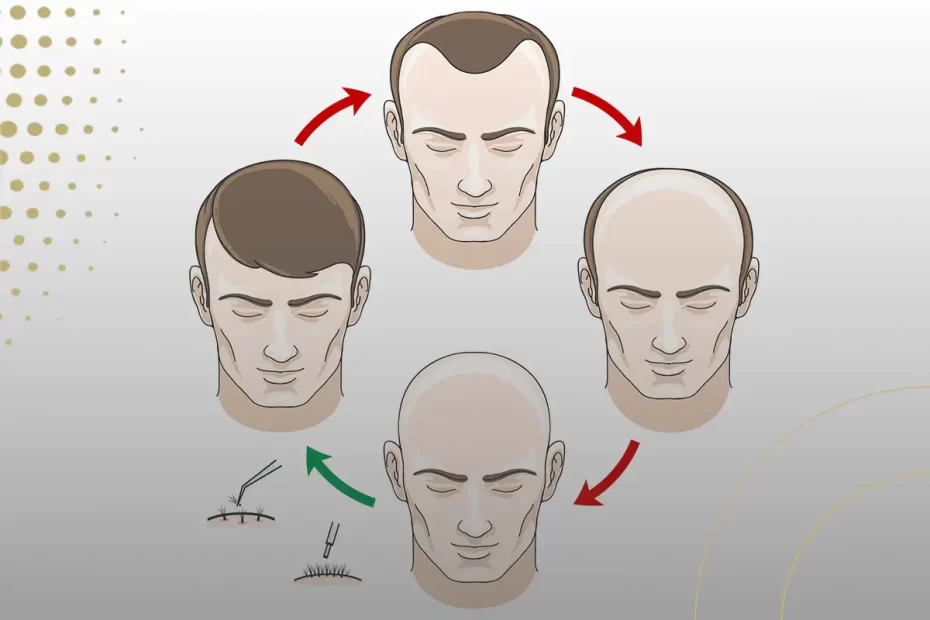How Does a Hair Transplant Work? A Detailed Guide
Hair loss affects people of all genders, and for those looking to restore their hair, a hair transplant offers a promising solution. But how exactly does a hair transplant work? Let’s explore the process step by step to understand this popular procedure.
The Steps of a Hair Transplant
A hair transplant involves taking small grafts from a donor area of the scalp and implanting them into the bald or thinning areas. These grafts can be as small as one to two hairs (micrografts) or larger, with up to 15 hairs (round-shaped grafts). Here’s a breakdown of the process:
Harvesting the Donor Grafts:
Surgeons harvest grafts by either removing a small strip of scalp (strip harvesting) or individually extracting hair follicles (Follicular Unit Extraction or FUE). They shave the donor area, typically the back or sides of the scalp, to ensure precise extraction.
Preparation of the Grafts:
After harvesting, the surgeon divides the scalp into smaller sections, each containing one or more hair follicles. These sections, known as grafts, vary in size: micrografts (1-2 hairs), mini-grafts (2-4 hairs), and larger grafts like strip or cleft grafts (4-40 hairs).
Implanting the Grafts:
The surgeon makes tiny incisions in the recipient area, targeting spots where the hair is thinning or bald. They then carefully place the grafts into these incisions, ensuring the hair grows in a natural direction for a seamless look.
Post-Transplant Care:
After the procedure, the medical team cleans and wraps the scalp in gauze. Some patients may need a pressure bandage for a day or two. Healing requires several months, and final results may take up to two years, especially if multiple sessions are necessary.

Types of Hair Transplant Techniques
-
Grafting:
- The most common method, involving the extraction and implantation of small hair-bearing scalp pieces.
- Grafting may require multiple sessions, with each session moving a large number of grafts.
-
Scalp Reduction:
- Involves removing the bald skin and stretching the surrounding hair-bearing skin to cover the area.
- Best suited for treating bald spots on the top and back of the head.
-
Flap Surgery:
- Used for significant bald areas at the front of the scalp. A flap of hair-bearing skin is lifted and moved to the bald area.
- This complex procedure is done over several weeks and requires general anesthesia.
-
Tissue Expansion:
- Often used for burn-related hair loss, this technique involves inserting a tissue expander under the scalp.
- The expander stretches the skin, which is later used to cover bald areas.
Potential Risks of Hair Transplantation
Like any surgical procedure, hair transplantation comes with risks, including:
- Allergic reactions to anesthesia.
- Excessive bleeding.
- Infection.
- Loss of sensation in the scalp.
- Scarring.
Side Effects of Hair Transplantation
While most side effects are temporary, some patients may experience:
- Scabs or crusting on the scalp.
- Itching or discomfort.
- Swelling.
- Pain at the donor or recipient site.
Longevity of Hair Transplant Results
Hair transplant results typically start to be visible after about a year and can last for many years, often for life. The longevity of the results can be enhanced by taking medications to prevent further hair loss. However, if additional hair loss occurs, a second or even third transplant may be necessary.
Why Choose a Hair Transplant in Turkey?
Turkey has become a top destination for hair transplants due to its high-quality care and affordable prices. When choosing a clinic, consider the following:
- Ensure the clinic is licensed and registered.
- Look for experienced hair transplant surgeons.
- Read patient reviews and testimonials.
- Verify the clinic’s digital presence and patient care practices.
ClinMedica, a reputable clinic in Turkey, offers comprehensive FUE hair transplant packages, ensuring personalized care and impressive results. A hair transplant can be a life-changing procedure, boosting confidence and restoring a youthful appearance.
Would you like to learn more about our services or hear from our satisfied patients?

